Quinoa is a versatile and nutritious grain that has become a staple in many kitchens around the world. Properly storing quinoa is essential to maintain its freshness, flavor, and quality over time. This guide explores the key aspects of how to store quinoa.
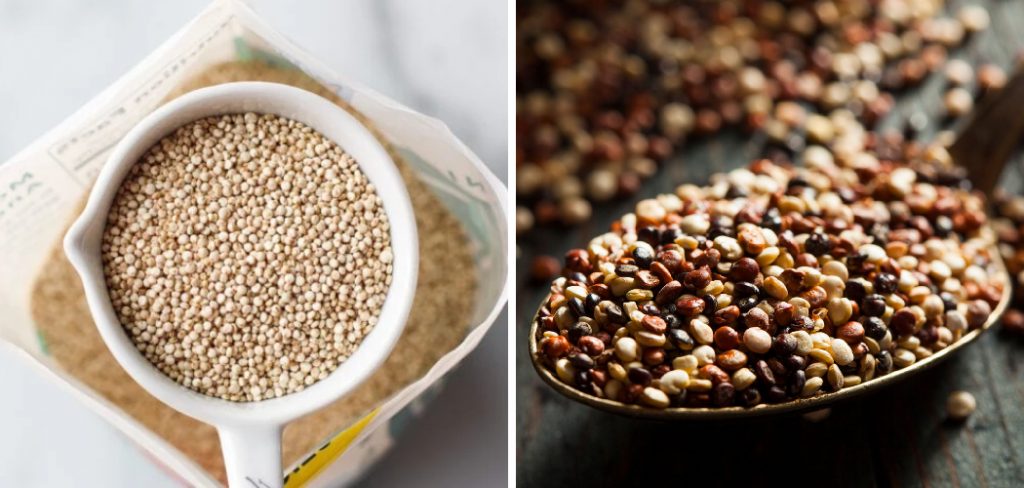
Whether you’re dealing with raw or cooked quinoa, understanding the best storage practices can help you make the most of this healthy ingredient while preventing waste.
Common Storage Mistakes That Lead to Spoilage or Loss of Quality
Improper storage of quinoa can lead to spoilage or a decline in its quality. One common mistake is leaving raw quinoa in its original packaging without sealing it properly. Exposure to air and moisture can cause the grains to become stale or even develop mold. Another error is storing quinoa in warm or humid environments, which accelerates spoilage and can attract pests. For cooked quinoa, a frequent mistake is leaving it at room temperature for too long, as this encourages bacterial growth and decreases shelf life.
Additionally, failing to use airtight containers when refrigerating or freezing cooked quinoa can result in a dry texture or freezer burn. Avoiding these pitfalls will ensure your quinoa stays fresh and flavorful for longer.
Shelf Life of Uncooked Quinoa in the Pantry
Uncooked quinoa can be safely stored in the pantry for an extended period when kept under the right conditions. Typically, quinoa can maintain its quality for up to two years if it is stored in a cool, dry, and dark place. To extend its shelf life, transfer the quinoa from its original packaging into an airtight container to protect it from moisture, pests, and air exposure.
Labeling the container with the purchase or expiration date can also help ensure you use it while it is still fresh. With proper storage, quinoa remains a reliable pantry staple ready for a variety of recipes.
When Refrigeration is Necessary
Refrigeration is necessary when storing cooked quinoa to ensure it remains safe to eat and retains its quality. After cooking, quinoa should be cooled to room temperature and then transferred to an airtight container before placing it in the refrigerator. Cooked quinoa can generally be stored in the refrigerator for up to five to seven days.
Ensure the container is tightly sealed to prevent the absorption of odors from other foods and to maintain the quinoa’s freshness. If you plan to store quinoa for an extended period or have a large batch to preserve, freezing it may be a better option, as refrigeration is best suited for short-term storage. Proper handling and refrigeration can help cooked quinoa stay flavorful and ready for your next meal.
10 Methods How to Store Quinoa
1. Storing Uncooked Quinoa in an Airtight Container
The simplest and most effective way to store uncooked quinoa is to keep it in an airtight container. Since quinoa is highly susceptible to moisture and pests, a sealed container prevents contamination and preserves its freshness. Glass jars, BPA-free plastic containers, or stainless steel canisters work best. Store the container in a cool, dry place such as a pantry or cupboard to extend its shelf life for up to two years.
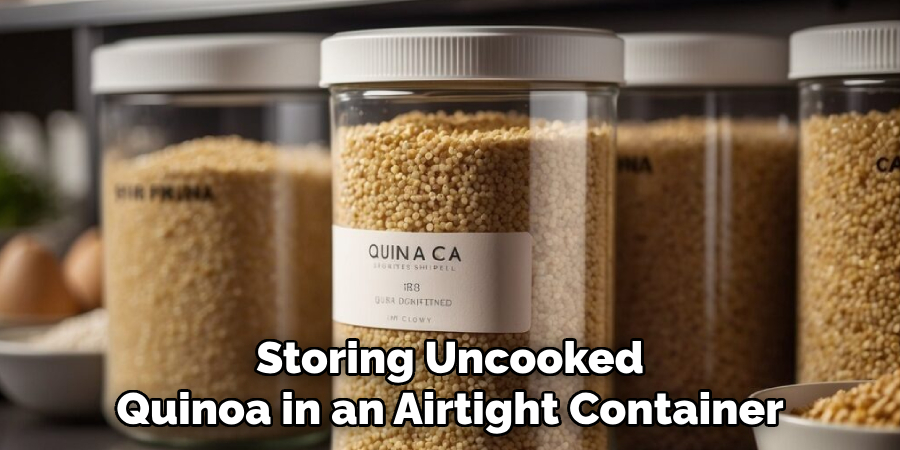
2. Keeping Quinoa in a Vacuum-Sealed Bag for Long-Term Storage
For those looking to store quinoa for an extended period, vacuum-sealing is an excellent option. Vacuum-sealed bags remove all air, preventing oxidation and pest infestation. This method ensures that the quinoa remains fresh and safe for consumption for several years. Store vacuum-sealed quinoa in a dry, dark place to further enhance its longevity.
3. Refrigerating Uncooked Quinoa for Extra Freshness
Although quinoa can be stored at room temperature, refrigerating it provides an added layer of protection against humidity and pests. Place quinoa in a tightly sealed container before refrigerating to prevent it from absorbing any odors from other foods. This method helps retain its natural taste and extends its shelf life to around three years.
4. Freezing Uncooked Quinoa for Maximum Longevity
Freezing uncooked quinoa is another way to extend its shelf life significantly. Place the quinoa in an airtight, freezer-safe container or vacuum-sealed bag before storing it in the freezer. This method can keep quinoa fresh for up to five years. When ready to use, allow it to thaw at room temperature before cooking as usual.
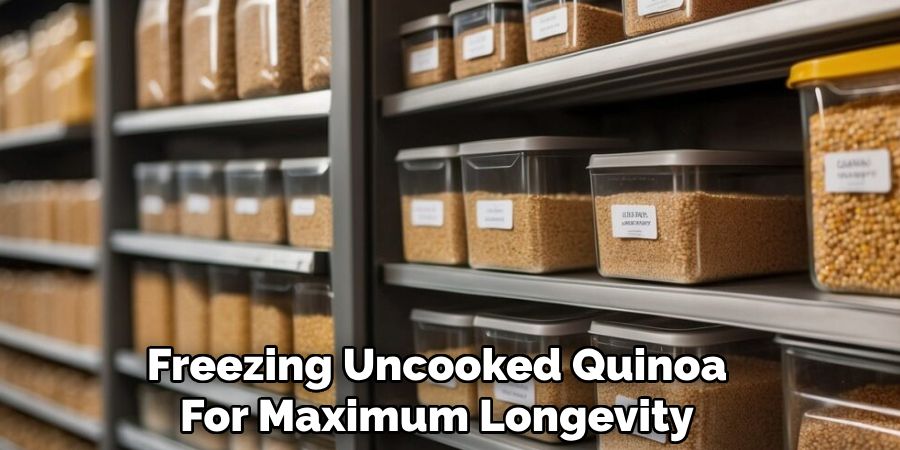
5. Storing Cooked Quinoa in the Refrigerator
Once quinoa has been cooked, it should be stored properly to prevent spoilage. Allow it to cool completely before transferring it into an airtight container. Refrigerated cooked quinoa stays fresh for up to five to seven days. Always use clean utensils to scoop out portions to avoid introducing bacteria that may shorten its shelf life.
6. Freezing Cooked Quinoa for Easy Meal Prep
Freezing cooked quinoa is ideal for meal prepping and saving time in the kitchen. To do this, spread the cooked quinoa on a baking sheet in a thin layer and allow it to cool completely. Once cooled, portion the quinoa into freezer-safe bags or airtight containers and label them with the date. Frozen cooked quinoa can last up to eight months and can be reheated directly from frozen or thawed overnight in the refrigerator.
7. Using Oxygen Absorbers for Long-Term Storage
If you’re planning to store quinoa for years, using oxygen absorbers inside storage containers can help extend its freshness. Oxygen absorbers prevent oxidation, mold growth, and insect infestations. This method works particularly well when combined with vacuum-sealing or Mylar bags, keeping quinoa fresh for up to ten years.
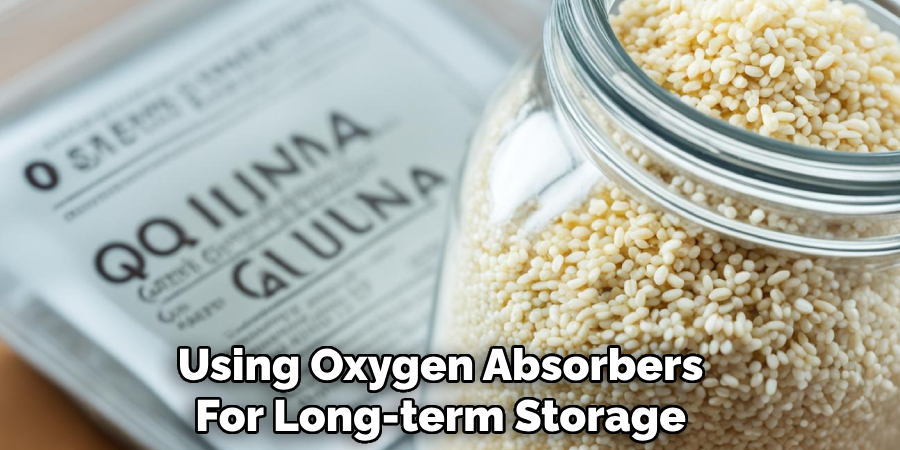
8. Keeping Quinoa in Mylar Bags for Emergency Storage
Mylar bags provide a durable and protective environment for storing quinoa, making them an excellent choice for emergency food supplies. When sealed with an oxygen absorber, Mylar bags create an oxygen-free environment, preventing spoilage. Store these bags in a cool, dark place, such as a pantry or basement, to ensure quinoa remains viable for up to a decade.
9. Preventing Moisture Exposure with Desiccants
Moisture is one of the main factors that can spoil quinoa. To prevent this, placing food-safe desiccants inside storage containers helps absorb excess moisture, keeping quinoa dry and fresh. This method is particularly beneficial in humid environments, where quinoa is prone to clumping or mold growth.
10. Labeling and Rotating Stored Quinoa
Regardless of the storage method, always label quinoa containers with the date of purchase or storage to track its shelf life. Practice a first-in, first-out (FIFO) approach to use older quinoa before opening new supplies. This prevents waste and ensures that stored quinoa is always at its freshest.
How to Thaw and Reheat Frozen Quinoa
Thawing and reheating frozen quinoa is a simple process that ensures you can enjoy it with consistent quality and texture. To thaw frozen quinoa, transfer the desired portion from the freezer to the refrigerator and allow it to defrost overnight. This gradual thawing process helps maintain the quinoa’s texture and prevents it from becoming overly mushy. For quicker thawing, you can place the frozen quinoa in a microwave-safe dish and use the defrost setting for a few minutes, checking periodically to ensure even thawing.
Once thawed, reheating quinoa is straightforward. The microwave is one of the easiest methods—simply place the quinoa in a microwave-safe bowl, cover it with a damp paper towel to retain moisture, and heat in short intervals, stirring between each interval.
Alternatively, you can reheat quinoa on the stovetop by adding a tablespoon of water or broth to a pan, then warming the quinoa over low to medium heat while stirring gently until heated through. Both methods work well to restore the quinoa’s original fluffy texture, making it ready to include in your favorite dishes. Proper thawing and reheating ensure that frozen quinoa retains its flavor and nutrient value, allowing you to conveniently incorporate it into your meals.
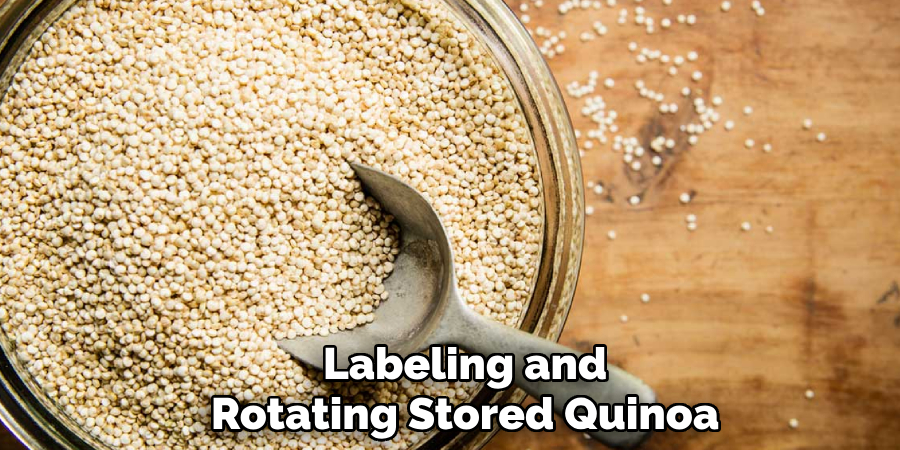
Safety Considerations
When storing and handling quinoa, it’s important to follow safety guidelines to ensure its quality and prevent contamination. Always use clean, dry containers or bags to store quinoa, as moisture and impurities can lead to spoilage or bacterial growth. Ensure that storage areas are free of pests and maintain a consistent temperature to prevent fluctuations that could harm the quinoa’s integrity.
For cooked quinoa, refrigeration should be done promptly—never leave cooked quinoa at room temperature for more than two hours, as this can encourage the growth of harmful bacteria. Similarly, when reheating quinoa, make sure it reaches an internal temperature of at least 165°F (74°C) to ensure it is safe for consumption.
Finally, always inspect quinoa before use, whether raw or cooked, for unusual odors, discoloration, or visible pests to avoid consuming spoiled or unsafe food. These precautions will help maintain the safety and quality of your quinoa for both short- and long-term use.
Conclusion
Proper storage of quinoa is essential to maintain its nutritional quality, flavor, and shelf life. Whether you prefer to store it in airtight containers, vacuum-sealed bags, refrigerators, or freezers, each method offers a unique advantage based on your needs.
By implementing these ten methods, you can ensure that your quinoa remains fresh and ready for use whenever you need it. So, there you have it – a quick and easy guide on how to store quinoa.
Professional Focus
Angela Ervin, a former interior designer turned blogger, specializes in kitchen design and renovations. Through her website, she blends her passion for cooking with design expertise, sharing practical and creative ideas. Known for balancing functionality and beauty, Angela’s insightful content has made her a trusted voice in home design and lifestyle.
About the Author
Angela Ervin, an experienced interior designer and blogger, combines her passion for kitchen renovations with storytelling. Living in Petersburg with her family, she enjoys cooking and testing her projects firsthand. Known for her humor and relatable style, Angela shares creative, functional design insights through her content, making her a trusted voice in home design.
Education History
University: Virginia Commonwealth University
Degree: Bachelor of Fine Arts (BFA) in Interior Design
- Angela’s education at VCU focused on mastering core interior design principles, including spatial planning, color theory, materials selection, and sustainable design practices.
- She gained hands-on experience through studio projects and collaborative design exercises, which honed her ability to create functional and aesthetically pleasing environments.
- Her coursework also emphasized problem-solving and practical applications of design, preparing her for real-world projects like her self-directed kitchen renovations.
- The program’s strong foundation in both technical skills and creative expression shaped Angela’s ability to seamlessly integrate form and function in her work.


